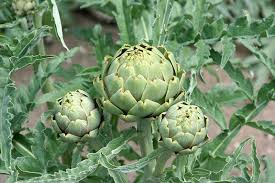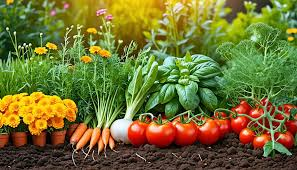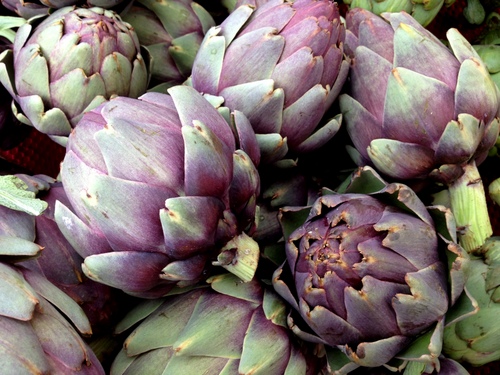Each new gardening year begins with a familiar ritual—my nose buried in seed catalogs. While I spend a lot of time drooling over appealing carrots and carefully considering broccoli varieties, I’m also on the hunt for something new and unusual to try. These “novelty crops” are often plants I’ve never grown before, or ones I haven’t tried in years. I choose them out of curiosity, eager to see how they perform in my garden and what they bring to the table—literally and figuratively.
Last year, I decided to give globe artichokes another shot, despite a few failed attempts in the past. The gardener’s curiosity is hard to resist, and I was determined to see if I could make them work. I started the seeds indoors in January, exposed the young plants to a chilly spring, and by late June, I had a small harvest of artichoke buds. Steamed artichoke hearts made it to the dinner table, and Roger’s feedback was candid: “These are good, but is this all you get?” He was right—while the artichokes were a fun experiment, the space they occupied didn’t quite justify their relatively low yield in my climate.

After this, I decided to return to onions for my late winter seed-starting fun. Onions are incredibly diverse, and I love experimenting with different types. It was through trial and error that I discovered shallots, which I grew from seed, and the elongated “topedo” onions. These crops quickly moved from novelty status to garden staples, and I’m glad I took the gamble to try something new.
Gardening provides a unique opportunity to explore food at its most basic level—where seeds, soil, and sun come together. Many common garden vegetables, like carrots, tomatoes, and potatoes, offer a homegrown flavor that can’t be matched. But it’s the willingness to try new varieties and crops that leads to some of the most profound culinary discoveries. Have you ever grown kohlrabi, scarlet runner beans, or the beautifully colorful ‘Flashy Trout’s Back’ lettuce? These are just a few examples of plants that every gardener should experience at least once. There are endless possibilities, and I’m sure you have your own suggestions to add to this “gardener’s life list.”
Incorporating novelty crops into your garden lineup is a surefire way to keep things interesting. Whether it’s dark purple tomatoes, striking ‘Yin Yang’ beans, or experimenting with edible flowers like marigolds or nasturtiums, these unique plants add a sense of fun and surprise to the gardening process.
However, a key lesson I’ve learned is to be cautious and attentive with novelty crops—sometimes there’s a reason why they’re not widely grown. For instance, I once grew Nigella sativa, hoping to harvest the black seeds as a spice. While the seeds were successful, I missed some during harvest, and the plant became invasive. Over the next few seasons, the Nigella turned into an annoying weed. Similarly, an ornamental gourd I grew a few years ago continues to resurface, though I’ve come to accept it as a pleasant addition for attracting bees in late summer.

Gardening novelty crops not only satisfies the curiosity but also keeps your gardening experience fresh and exciting. It fuels your sense of wonder as you anticipate new growth and explore the mysteries of the garden. As a seasoned gardener, I still feel the thrill of trying new things. This year, I’m eager to try tomatoes with late blight resistance and tackle the heirloom ‘Winter Luxury’ pie pumpkin, which I’ve yet to grow. Even after decades of gardening, there’s always something new to look forward to, and that’s what keeps the hobby endlessly rewarding.
